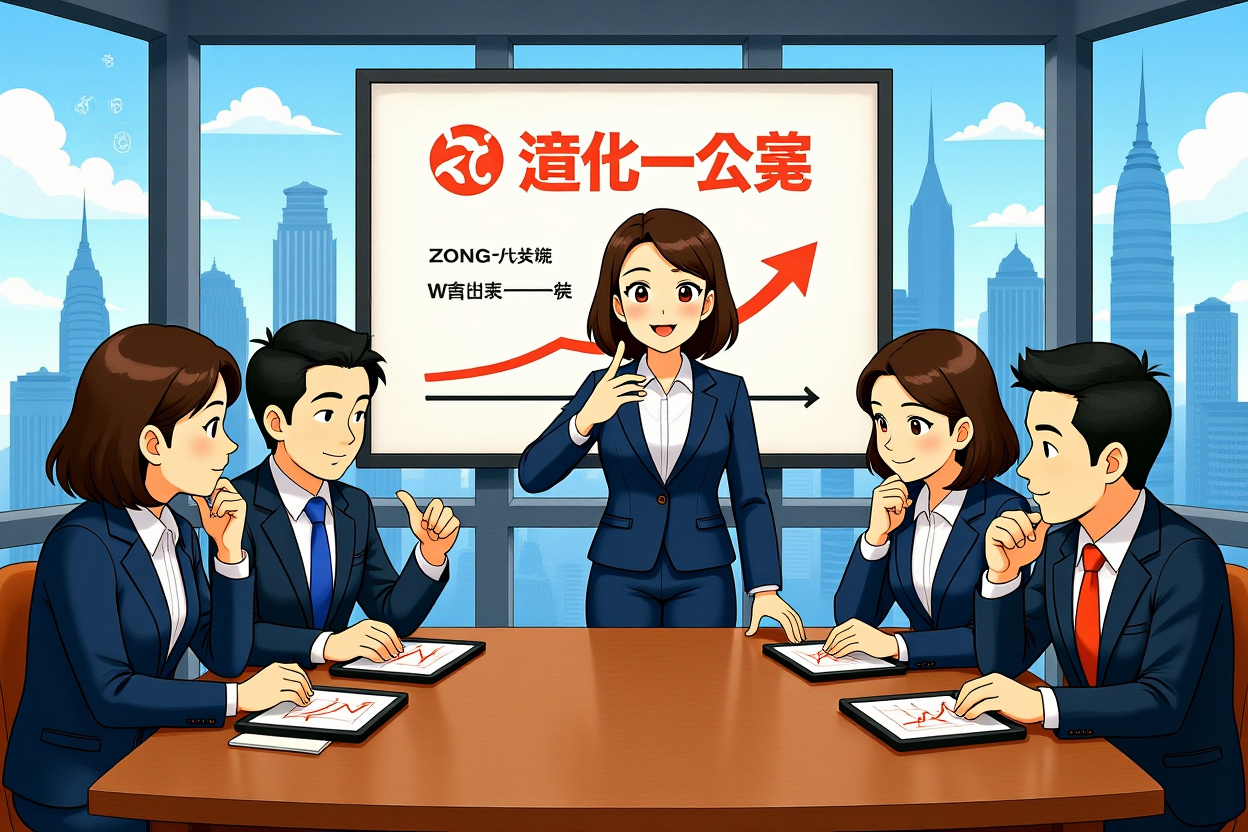The Brand Shakeup That’s Rattling China’s Beverage Industry
The future of China’s most iconic beverage brand hangs in the balance as Zong Fuli, daughter of late Wahaha founder Zong Qinghou, proposes replacing the household name ‘Wahaha’ with new brand ‘Waxiaozong’ starting 2026. This dramatic Wahaha brand transition represents either a bold strategic pivot or a dangerous corporate power struggle that could determine the fate of one of China’s most valuable consumer brands.
Internal documents obtained by China Entrepreneur reveal that company management cites ‘complex historical issues’ and legal risks as justification for the proposed Wahaha brand transition. The move comes amid ongoing tensions between Zong Fuli and other shareholders of Hangzhou Wahaha Group, creating uncertainty for investors and distributors alike.
Executive Summary: Critical Takeaways
– Zong Fuli plans to replace the 911.87 billion yuan Wahaha brand with ‘Waxiaozong’ starting 2026, citing legal compliance concerns
– The proposed Wahaha brand transition faces massive resistance from distributors, with 99% reportedly rejecting the new brand
– Complex ownership structure limits Zong’s control, with government entities holding 46% of Wahaha Group
– Previous brand venture KellyOne failed spectacularly, raising questions about brand management capabilities
– Distributor confidence has collapsed amid sales pressure and market chaos under new leadership
The Ownership Struggle Behind the Brand Decision
The proposed Wahaha brand transition stems from a complex ownership structure that limits Zong Fuli’s control over the brand she inherited. Hangzhou Wahaha Group’s shareholder composition creates inherent tensions: Hangzhou Shangcheng District Wenshanglv Investment Holding Group Co., Ltd. holds 46% as largest shareholder, Zong Fuli maintains 29.4% inherited from her father, and the employee stock ownership committee controls the remaining 24.6%.
This fragmented ownership means that using the Wahaha trademark requires unanimous shareholder approval—a nearly impossible hurdle that explains the push for the Wahaha brand transition. Zong previously attempted to transfer the trademark to Hangzhou Wahaha Food Co., Ltd., where she holds majority control, but the effort was suspended after media exposure.
The Legal Imperative Driving Change
Company documents state that ‘due to complex historical related problems that cannot be effectively resolved in the near term, causing company operations to remain exposed to relevant legal risks,’ management felt compelled to initiate the Wahaha brand transition. This suggests underlying legal vulnerabilities in the current brand arrangement that could expose the company to significant liability.
Industry analysts speculate that the legal concerns might involve trademark usage rights, licensing agreements, or inheritance issues related to Zong Qinghou’s estate. The Wahaha brand transition may represent an effort to clean up these complexities rather than simply rebranding.
Distributor Rebellion: The Frontline Resistance
The proposed Wahaha brand transition faces near-universal rejection from the distribution network that has built Wahaha into a national powerhouse. Lu Ming (pseudonym), a 20-year Wahaha distributor, represents the overwhelming sentiment: ‘99% of Wahaha distributors will not handle ‘Waxiaozong’.’
This distributor resistance threatens to derail the entire Wahaha brand transition strategy. Distributors question the fundamental business logic of abandoning a brand valued at nearly 912 billion yuan for an unknown replacement. As Lu Ming bluntly states: ‘I transfer money to the company, they ship me Waxiaozong products, and if I can’t sell them, what then?’
The Economic Reality for Distributors
Current economics already make distributing Wahaha products marginally profitable at best. Distributors report gross margins around 10%, shrinking to 2-3% net profit after accounting for labor, transportation, and storage costs. With returns and spoilage, many distributors barely break even—making the proposed Wahaha brand transition an unacceptable risk.
Liu Peng (pseudonym), a former Inner Mongolia distributor, was recently terminated for failing to meet sales targets that increased dramatically under Zong Fuli’s leadership. His experience exemplifies the pressure crushing distributors: ‘Previously moving 200,000-300,000 yuan monthly was easy—now they demand 500,000-600,000 with no market support.’
The Failed Precedent: Lessons from KellyOne
Zong Fuli’s previous brand venture raises serious questions about the proposed Wahaha brand transition. Her 2016 launch of KellyOne brand beverages ended disastrously, with products frequently distributed as employee福利 (benefits) after failing to sell. Even when forced to purchase KellyOne products as sales requirements, distributors typically gave them away rather than attempting retail sales.
Today, searching for KellyOne on Taobao reveals mostly expired products from clearing warehouses. This track record of brand management suggests the Wahaha brand transition faces significant execution risks beyond the obvious marketing challenges.
Market Realities of Brand Building
Building a new beverage brand in China’s crowded market requires tremendous investment and time. As Liu Peng notes: ‘Wahaha is deeply entrenched in consumers’ hearts—without two or three years of cultivation, a new brand probably won’t sell.’ Even Wahaha’s new product launches under the established brand have struggled, with recently repackaged ice tea becoming ‘old difficult inventory’ in distribution channels.
The Wahaha brand transition would require convincing consumers to abandon thirty years of brand recognition for an unknown replacement—a challenge even with massive marketing spending.
Governance Implications for Chinese Enterprises
The Wahaha brand transition drama highlights broader governance issues in Chinese family businesses transitioning to second-generation leadership. The tension between founding family interests, government shareholders, and employee ownership creates complex decision-making environments that can paralyze strategic development.
For international investors, the situation demonstrates the hidden risks in seemingly stable Chinese consumer brands. The proposed Wahaha brand transition reveals how ownership structures and succession issues can suddenly threaten even the most established brands.
The Power Struggle Interpretation
Some analysts interpret the Wahaha brand transition as a strategic power move rather than a genuine rebranding effort. As distributor Lu Ming suggests: ‘The implied meaning is that if she doesn’t use the Wahaha trademark, then other relevant shareholders cannot use it either—the next step may be freezing the Wahaha brand.’
This nuclear option would force other shareholders to the negotiating table by threatening the value of their most important asset. Whether this represents brilliant strategic maneuvering or dangerous brinksmanship depends on one’s perspective.
The Path Forward: Stabilization Before Innovation
Before pursuing the risky Wahaha brand transition, Zong Fuli must address the collapsing confidence among distributors and retailers. Multiple sources describe distributors ‘on the verge of崩溃 (collapse)’ due to unreasonable sales targets and chaotic market pricing. Some regions report one-third of distributors nearing abandonment of the brand.
As one former distributor notes: ‘Regardless of whether Wahaha changes to Waxiaozong or Waxiaoxiao, the key still lies with Zong Fuli herself—what is her long-term planning for enterprise management? Without changing these things, changing nothing matters.’ The fundamental issue isn’t the brand name but leadership approach and strategic vision.
Immediate Priorities for Management
Stabilizing distributor relationships represents the most urgent challenge. This requires realistic sales targets, improved market support, and pricing stability. Without fixing these fundamentals, even maintaining current business levels seems doubtful—much less executing a successful Wahaha brand transition.
Secondly, management must clarify the legal concerns driving the rebranding decision. Transparent communication about the specific risks might build understanding, if not support, for the Wahaha brand transition among stakeholders.
Investment Implications and Market Outlook
The proposed Wahaha brand transition creates significant uncertainty for investors in China’s consumer sector. If one of China’s most stable brands can face such dramatic upheaval, similar risks may exist elsewhere. Investors should scrutinize ownership structures and succession plans across their Chinese holdings.
For Wahaha specifically, the situation threatens short-term disruption regardless of the eventual outcome. Distributor resistance may depress sales even before any formal Wahaha brand transition begins, creating headwinds for financial performance.
The Bigger Picture: China’s Corporate Transition
Wahaha’s struggles reflect broader challenges as China’s first generation of private entrepreneurs passes control to successors. These transitions often reveal governance weaknesses and strategic disagreements previously hidden by strong founder leadership. The Wahaha brand transition attempt represents just one visible example of this nationwide phenomenon.
How this situation resolves will provide valuable lessons for other family businesses navigating similar transitions. A successful Wahaha brand transition could demonstrate how to refresh aging brands, while failure might caution against radical changes during leadership transitions.
Navigating the Uncertainty Ahead
The proposed Wahaha brand transition represents either visionary leadership or dangerous overreach—time will determine which. What’s certain is that abandoning a brand valued at nearly 912 billion yuan constitutes one of the boldest, riskiest corporate moves in recent Chinese business history.
Investors should monitor several key indicators: distributor retention rates, sales performance of existing products, and clarity around the legal issues driving the change. Most importantly, watch for signs of compromise between shareholders that might preserve the Wahaha brand while addressing whatever underlying issues necessitated consideration of the Wahaha brand transition.
For now, the future of one of China’s most iconic brands remains uncertain, hanging on the outcome of internal power struggles and market acceptance. The coming months will determine whether Waxiaozong becomes the next great Chinese brand or a cautionary tale about the risks of abandoning hard-earned brand equity.




